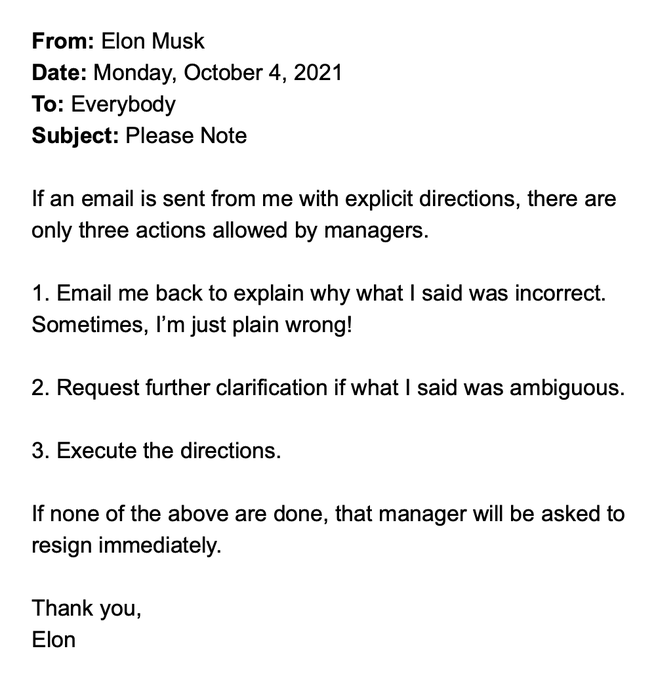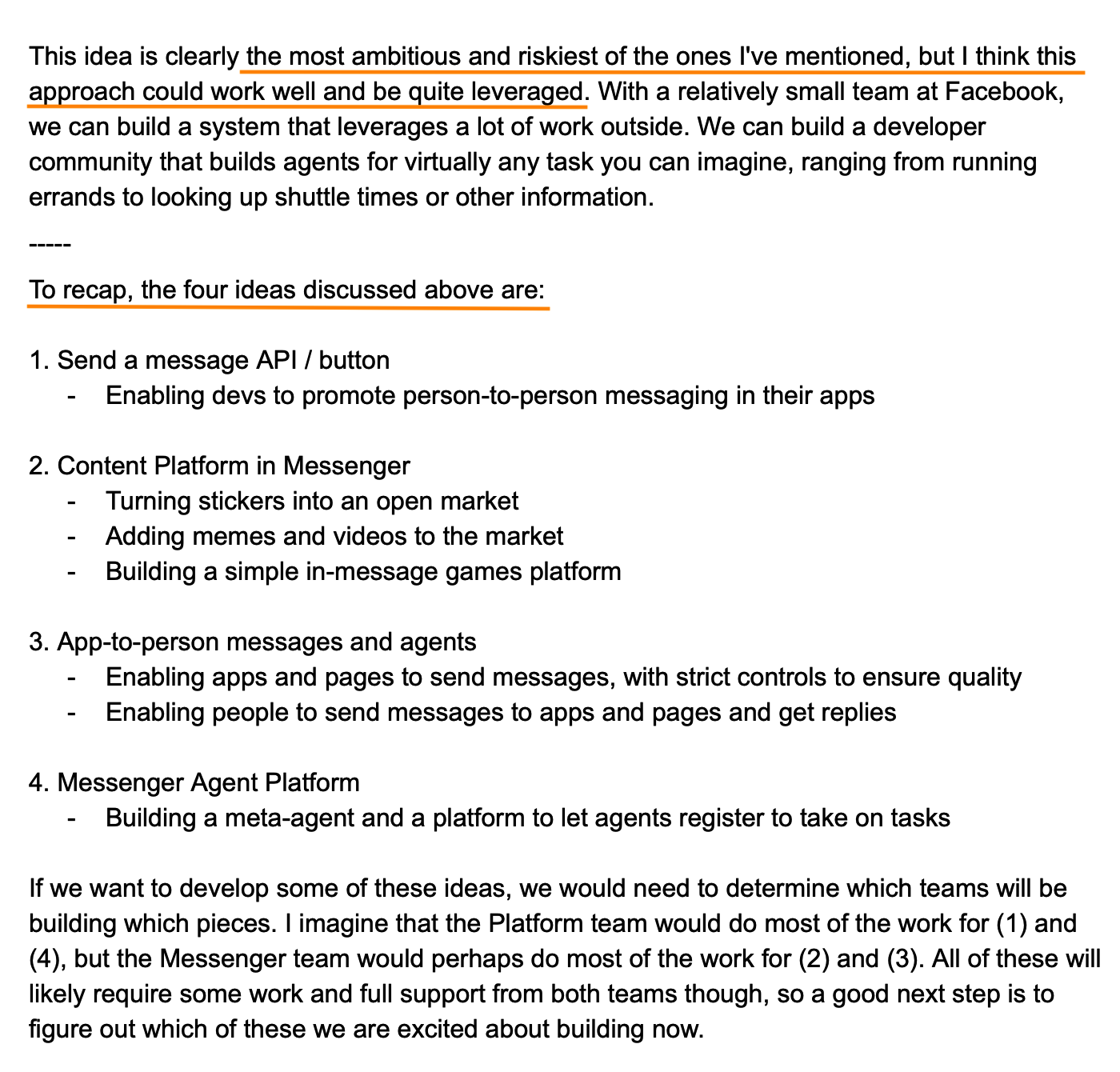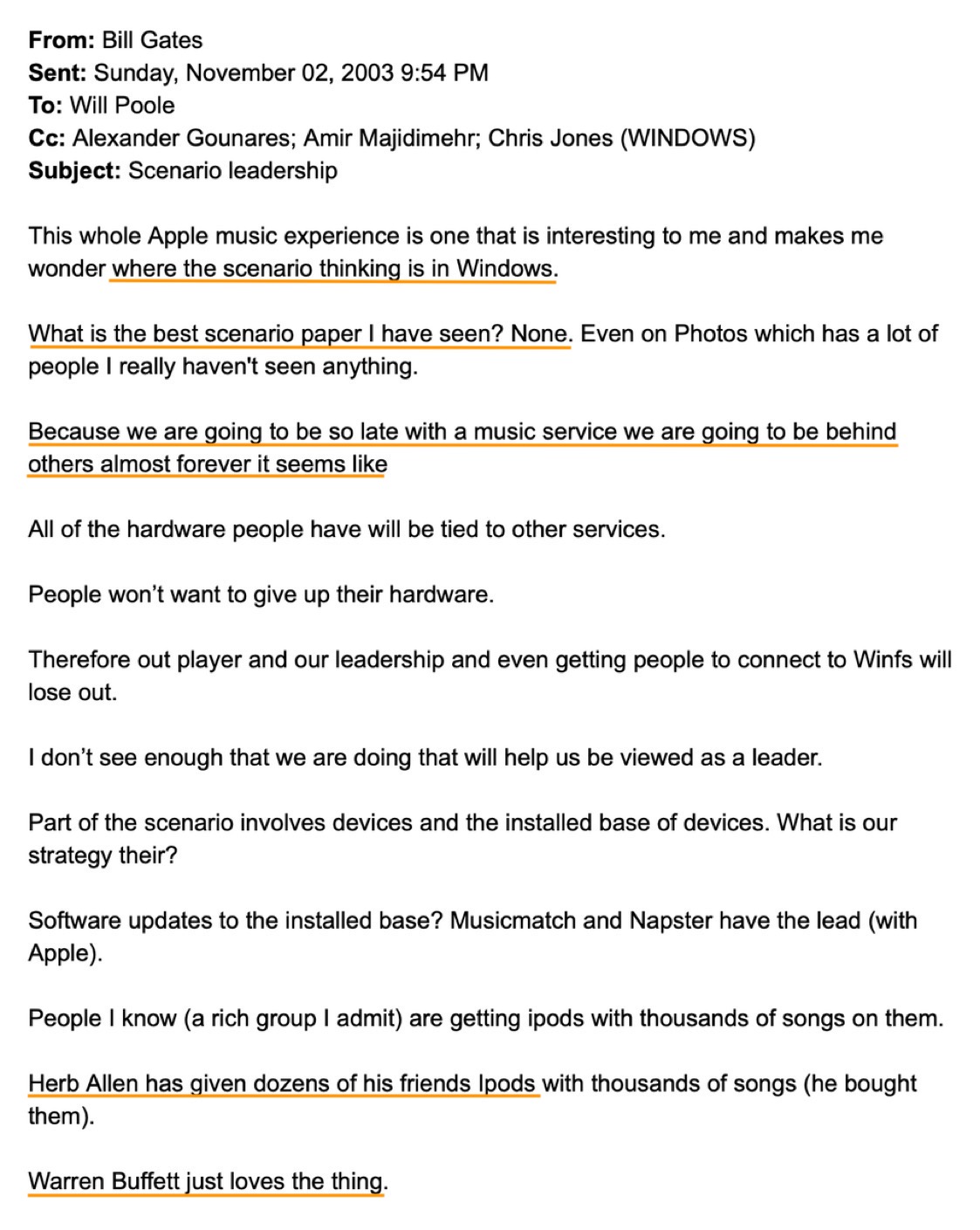9 Must-Read Enterprise Sales Lessons Revealed in Leaked Emails at Tesla, Facebook & Microsoft
I just spent nearly 10 hours reading internal emails and memos that were leaked from big tech companies. They spanned from the early 90’s to the present, and were written by execs inside companies like Facebook, Microsoft, and Tesla.
They were published on sites like The Verge, and this goldmine called techemails.com, which are incredible gifts to sellers who want to:
- Land larger and more strategic deals.
- Enable champions with a compelling narrative.
- Influence a buying team's internal communications.
If you’ve read anything on this blog, you know I couldn’t put these emails down.
Because I hold two, very strong opinions in life:
- Chocolate with less than 80% cacao isn’t “dark” chocolate.
- Enterprise Sales = Internal Communication.
Only the second is relevant here, but they’re both things you should know.
So I’ll highlight the most interesting excerpts from all my reading in this post, along with the top takeaways for enterprise sellers.
1/ Challenge & Clarify, Don’t Just Agree
I’ve never met a “normal” enterprise executive. Most have a very distinct style. Elon Musk is Exhibit A, who strikes most people as abrasive.
When interacting with a unique and bold personality, most employees default to option 3 in this email. Even if they (1) don’t agree (2) or understand. It’s seen as the safe route.

Which means your job as an enterprise seller is to:
- Build champions with a high degree of influence.
- Encourage them to challenge existing thinking.
Otherwise, you’ll never get a deal done.
You’ll continue to hear, “So sorry for the hold up, we’ve just been really busy,” while teams keep their heads down and execute what their executives say.
2/ Discover the Internal Trigger Phrase & Align with an Existing Priority
Here’s some nuance to the first point: 95% of the time, you’ll fail if you challenge what the executive’s priority is. Instead, you should challenge how they’re going about it.
There are two parts to this practice:
- Discover the unique, internal language the executive uses.
- Show that you’re aligned with the priority they’re already sold on.
Here’s how this played out at Facebook. Tom Alison, Head of Facebook, wrote up an internal memo to spread his primary narrative at the time: Shifting Facebook into a “Discovery Engine.”
Look at the underlined sentences in the memo below (or download a full, line-by-line breakdown here), and you'll see:
- “The Discovery Engine” is a phrase Facebook employees mentally flag as “important.”
- Alison’s long-term strategy drives everyone’s near-term priorities (keeping reading for more on this). So if your champion shares a message that doesn’t relate, they’ll be ignored.

3/ Craft a Narrative With Your Champion & Connect it to an Existing Narratives
Notice that the starting point for Alison’s narrative is a shift.
"Today we see a shift towards social media product serving as..." which is a massive change that needs a response in "the current moment.”
This is exactly why the Strategic Soundbite formula I've written about — a condensed version of your 1-Page Business Case — starts with two elements:
- A significant change.
- The importance of acting now.

Next, notice where Alison says this phrase came from.
It’s shared language created and used by the entire Meta leadership team:

What’s more, the Discovery Engine narrative is part of an even larger narrative. One that’s backed by Zuckerberg, shared with investors, and built on another shift:
The shift from Facebook to Meta.
That’s why narratives are like constellations. They gain traction by moving alongside other narratives inside the company. Verge reporter Alex Heath described the link this way:
While Instagram has already morphed to look more like TikTok with its focus on Reels, executives hope that a similar treatment to Facebook will reverse the app’s stagnant growth… but this time, the stakes are arguably higher.
Investors are doubting Meta’s ability to navigate challenges to its ads business. And with its stock price already battered, the company needs to show it can grow if Zuckerberg wants to keep funding his metaverse vision.
If we jump to Meta’s Q3 and Q4 2022 earnings calls, we see this narrative being shared over, and over again. The phrase “discovery engine” is mentioned at 13 different points:

4/ Frame Problems to Gain Attention
As Alison continues, notice how he talks about the problems in the way of their priorities.
Short-form video is a gap. That’s pretty straightforward. But notice the subtle framing in the next section. He says deciding what content to show their users:
- Is not a question of building a better ranking system.
- Is a matter of “evaluating billions of pieces of content.”

Alison is pivoting the issue away from ranking, towards "evaluation," which defines the solution space they’re interested in.
And notice how they’re actively looking for partners across the business. In other words, they’re facing a multithreaded problem. Which creates the opening for a “build vs. buy” conversation.
Often, the scales tip to buy instead of build when other teams don’t have the bandwidth to support another internal team.
5/ Quantify Outcomes With a Specific, Exec-Level Metric
In the early days of Facebook, Zuckerberg was laser-focused on a single metric: development speed. It was both the problem and the payoff he was pushing his team on.
Because for him, this was what determined whether their strategy succeeded, or failed.
The point? If your business case in the year 2008 didn’t explicitly link your project to increased development speed, it was probably ignored.

6/ When an Exec Writes You a 4,200 Word Email, Nothing Else Matters
Just to hit this point of selling priorities home, look at the way Zuckerberg concludes an insanely long email. (I pasted the whole thing into wordcounter.net and found it was 4,262 words long — 2-3X the average blog post, all written with his thumbs.)

7/ Cross-Team Communication is Challenging
Now, let me back up and show you the very first paragraph to that email:

Zuck calls out a reality that blocks multithreaded projects constantly:
- New projects often fall “in between” business units.
- Different business units each hold different budgets & incentives.
- Uniting multiple business units around a new direction is very hard.
So hard that the CEO wrote up 4,200 words to get something moving.
And that’s exactly why, if you’re not using your account maps to design internal communications, your deal is as good as dead.
8/ Sell the Approach Before the Product
Inside that same 4,200-word email, Zuck outlines 4 different ways to get their Messenger Platform moving in the right direction. Here’s him teeing up the different approaches:

And him recapping all four after laying out the details:

Now, notice just how different each of these paths are. They’re all rolling up to the same goal, but they’re entirely different routes.
This is a classic mistake enterprise sellers make.
They hear a goal that’s aligned to their product, like, “Drive more revenue,” and they jump right into sharing how their product helps.
But they haven’t addressed the higher-level choices and tradeoffs between approaches. For example, here are all the different inputs to “driving revenue.”

So first, sell the approach. Then, sell a product that enables that approach.
9/ We’re All Human, Both Rational & Emotional
There’s an interesting duality in this email chain from Bill Gates.
He feels Microsoft is falling far behind in the music business, and emails his execs with two very different ways of thinking:
- Rational. At the top of this image, and later on down the email chain (not shown), he asks for scenarios. Structured ways of predicting the future.
- Emotional. In the middle, his emotional side comes out. He shares his FOMO, which grows while seeing his friends walking around with iPods.
Here's how the email reads:

The takeaway? We’re all human. So when you’re building your message, don’t forget to:
Alright. That was a lot, so me let summarize. The jump from selling B2B, to selling B2E, is less about the activities that directly involve sales reps (demos, pitches, etc).
Instead, selling B2E is about influencing the internal debates and decisions that happen behind closed doors — and determine the outcome of your deal.
Broken down into four major skillsets, selling B2E is about:
[1] Writing compelling narratives, [2] with an army of champions, while [3] designing the flow of internal communications, [4] to influence a large number of contacts with conflicting opinions & priorities.
Why stop now?
You’re on a roll. Keep reading related write-up’s:
Draft with one click, go from DIY, to done-with-you AI
Get an executive-ready business case in seconds, built with your buyer's words and our AI.

Meet the sellers simplifying complex deals
Loved by top performers from 500+ companies with over $250M in closed-won revenue, across 19,900 deals managed with Fluint

Now getting more call transcripts into the tool so I can do more of that 1-click goodness.



The buying team literally skipped entire steps in the decision process after seeing our champion lay out the value for them.


Which is what Fluint lets me do: enable my champions, by making it easy for them to sell what matters to them and impacts their role.









